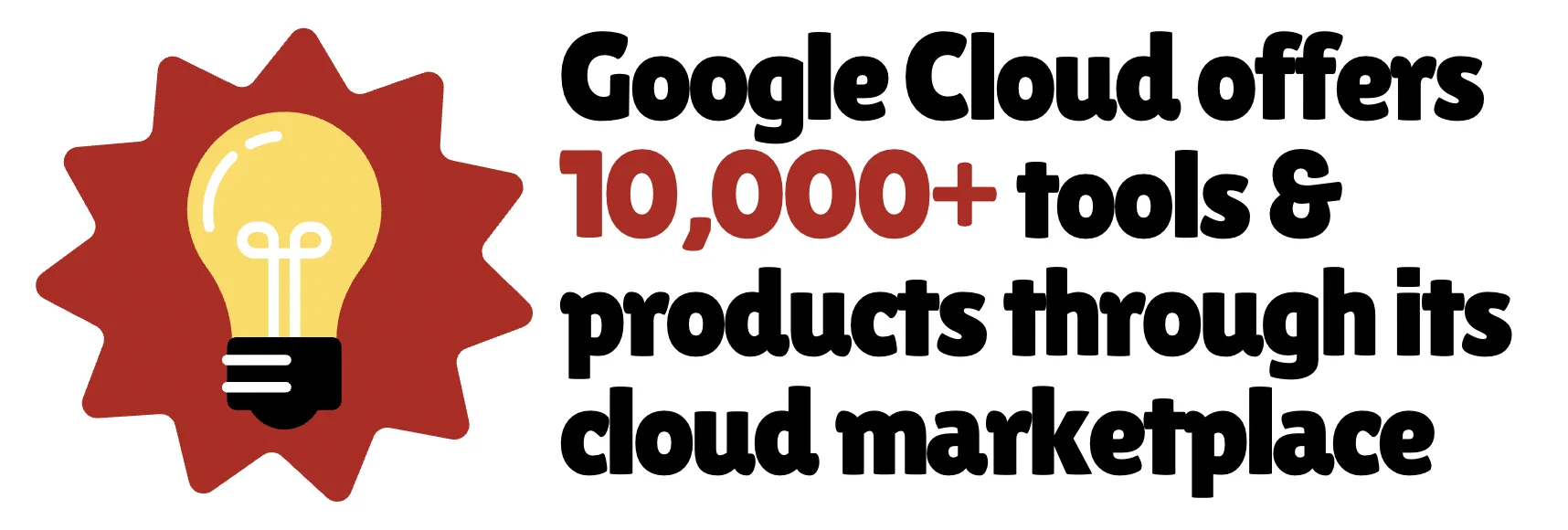IBM is one of the oldest continuously operating technology companies in the world — originally called the Computing-Tabulating-Recording Company (CTR) before adopting the IBM name in 1924.
Today, it operates in 170+ countries and employs roughly 293,000 people, making it one of the largest IT employers globally. Over 90% of Fortune 100 companies use IBM hybrid cloud or AI business solutions, while 95% of Fortune 500 companies entrust IBM with their data for “mission-critical” work. [1]
IBM is also the global leader in quantum computing, with over 80 quantum computers deployed. It aims to build large-scale, fault-tolerant quantum computers capable of running circuits with 1 billion gates on up to 2,000 qubits by 2033. [2]
IBM Quantum Network has 300+ member institutions, including Google, NASA, and major universities, working collaboratively on quantum research.
Despite its scale and legacy, IBM operates in a highly competitive ecosystem dominated by some of the world’s largest tech giants. Plus, the next generation of competition for IBM will not only come from the cloud and consulting giants but also from AI-native challengers and automation leaders,
I’ve highlighted the top IBM competitors, along with their business models, financial strength, and strategic edges, to show how the global race for enterprise technology leadership is evolving and where IBM continues to maintain its lasting edge.
Did you know?IBM spends more than $8 billion annually in R&D. It has consistently ranked among the top patent holders in the US for over 29 consecutive years, holding over 155,300 patents worldwide. [3]
Table of Contents
13. NTT Data Corporation
Founded in 1988Revenue: $30 billion+
Number of Employees: 190,000+
Core Rivalry: IT services, managed cloud
Competitive Edge: Public sector dominance, Financial backing of NTT Group
NTT is a core subsidiary of Nippon Telegraph and Telephone Corporation (NTT Group), Japan’s leading telecommunications giant. It covers a range of services from enterprise consulting and systems integration to cloud computing, cybersecurity, and business process outsourcing.
While IBM leads with AI and hybrid cloud integration (via Red Hat and WatsonX), NTT Data’s strength lies in implementation scale, cost efficiency, and localized expertise, particularly in Asia, Europe, and Latin America.
NTT Data has a stronghold in government and public sector digitalization, especially in Japan and Europe. IBM also competes in this sector, but NTT Data’s close relationships with national governments give it a significant edge in local markets and long-term contracts.
Plus, NTT Data’s “Trusted Global Innovator” philosophy (balancing digital transformation with social responsibility) aligns perfectly with the evolving ethics of enterprise technology. [4]
12. Fujitsu Limited
Founded in 1935Revenue: $17 billion+
Number of Employees: 113,000+
Core Rivalry: Cloud hosting and computing infrastructure
Competitive Edge: High-performance computing, ESG-driven enterprise modernization
Fujitsu Limited is one of Japan’s largest information and communication technology (ICT) companies and among the oldest continuously operating technology firms in the world.
Historically known for its mainframes, servers, and computing hardware, Fujitsu has undergone a major transformation over the past decade — shifting from hardware manufacturing to cloud computing, software services, digital consulting, and managed IT infrastructure.
Its Hybrid IT division competes directly with IBM Cloud and IBM Consulting. Fujitsu Cloud Service for AWS, Azure, and VMware offers managed hybrid environments, similar to IBM’s multi-cloud orchestration via Red Hat OpenShift.
Fujitsu’s AI platform, Kozuchi, competes with IBM’s WatsonX, focusing on applied AI for predictive analytics, automation, and natural language processing. While IBM leads in AI governance and scalability, Fujitsu leverages domain-specific AI for industries such as logistics, manufacturing, and healthcare.
Plus, the company integrates AI, quantum-inspired computing, and advanced analytics into solutions to improve social well-being — a concept it calls “Trusted by Society”. Its Fujitsu Uvance initiative embodies this vision, aligning technology innovation with sustainability, inclusivity, and social progress.
11. Capgemini SE

Revenue: $23 billion+
Number of Employees: 349,400+
Core Rivalry: IT and management consulting, AI integration
Competitive Edge: Strong European presence, Engineering & R&D services
Capgemini is one of Europe’s largest IT consulting companies and a top global competitor to IBM. Its growth has been driven by a clear mission: to help enterprises bridge the gap between business and technology.
A major milestone in Capgemini’s evolution was its $4.1 billion acquisition of Altran Technologies in 2020. This merger allowed Capgemini to move beyond traditional IT consulting and expand into intelligent industry solutions across sectors such as automotive, telecommunications, aerospace, and life sciences.
Today, the firm provides a full spectrum of services spanning management consulting, technology development, cloud transformation, AI, cybersecurity, and digital engineering.
Unlike IBM, Capgemini takes a vendor-agnostic approach, integrating third-party cloud and software platforms (AWS, Azure, Google Cloud, SAP, Oracle, Salesforce) to deliver business outcomes. While IBM’s hybrid cloud is tightly integrated within its own software ecosystem, Capgemini focuses on implementation and integration partnerships with major hyperscalers.
In 2025, Capgemini acquired WNS Global Services for $3.3 billion to bolster its intelligent operations and AI-enabled business-process services segment. This deal adds significant scale in India and North America, and accelerates Capgemini’s move into next-gen Intelligent Operations. [5]
10. Tata Consultancy Services (TCS)
Founded in 1968Revenue: $30 billion+
Number of Employees: 580,000+
Core Rivalry: IT consulting, managed services
Competitive Edge: Cost efficiency, Diversified industry exposure
TCS is one of the world’s largest IT services and consulting companies, operating across industries such as banking and financial services, insurance, retail, manufacturing, healthcare, energy, and telecommunications.
The company’s business model emphasizes long-term client relationships and recurring managed service contracts. It has 64 clients generating over $100 million in annual revenue and serves more than 240 financial institutions across 80+ countries through its TCS BaNCS software.
Over the past decade, TCS has evolved beyond traditional outsourcing to become a strategic transformation partner for global enterprises. Its services now span cloud computing, AI, data analytics, IoT, blockchain, enterprise software, and cybersecurity.
The company has invested heavily in AI and automation platforms, including its proprietary TCS Cognix and Machine First Delivery Model, which help clients digitize operations efficiently and predictably.
IBM and TCS are both global consulting leaders, but their approaches differ. While IBM’s consulting arm focuses on technology integration and proprietary platform deployment, TCS provides vendor-neutral consulting and IT outsourcing. Many enterprises choose TCS for cost-effective, scalable delivery, especially for application management, ERP integration, and business process outsourcing.
9. Cisco Systems

Revenue: $56.6 billion+
Number of Employees: 86,200+
Core Rivalry: Networking and cybersecurity
Competitive Edge: Security & Zero Trust Solutions, Networking hardware
Cisco has evolved from a pure networking hardware company into a comprehensive IT infrastructure and software-driven enterprise solutions provider. Its technology powers over 85% of the world’s internet traffic, serving hundreds of thousands of organizations, including virtually every Fortune 500 enterprise. [6]
Cisco is one of the top three global cybersecurity vendors, directly competing with IBM’s QRadar and IBM Security business. Cisco’s integrated security architecture (including Cisco SecureX, Firepower, and Duo Security) competes with IBM’s AI-driven, analytics-based approach to threat management.
Cisco is also working on a new AI security model with over 17 billion parameters to enhance threat detection and response, showing its move deeper into AI-driven security. [7]
In 2025, the company announced the “Unified Edge” platform, an all-in-one solution combining computing, networking, storage, and security. It’s designed for distributed AI workloads such as edge processing and inference, bringing data center-level power closer to where data is generated (retail, factories, healthcare).
Furthermore, Cisco has a strong balance sheet with over $13 billion in annual free cash flow, enabling aggressive investment in R&D and acquisitions. Cisco’s innovation portfolio of over 24,300 active patents underscores its central role in shaping the future of digital connectivity.
8. Hewlett-Packard Enterprise (HPE)
Founded in 2015Revenue: $33 billion+
Number of Employees: 61,000+
Core Rivalry: Edge computing and cloud infrastructure
Competitive Edge: High-performance computing (HPC) dominance
Born out of the historic split of Hewlett-Packard Company in 2015, HPE focuses entirely on servers, storage, networking, cloud computing, and IT services.
Its core portfolio is organized around five business segments: Compute, Storage, Intelligent Edge, High-Performance Computing (HPC) & AI, and HPE Financial Services (HPEFS).
In data center infrastructure, HPE competes head-to-head with IBM’s Power Systems and Storage portfolio through its ProLiant servers, Alletra storage systems, and Aruba networking solutions. While IBM’s strength lies in mainframes and software-defined infrastructure, HPE focuses on modular, scalable systems optimized for multi-cloud deployments and data-intensive workloads.
In high-performance computing (HPC) and AI, HPE’s acquisition of Cray has made it a global leader in exascale computing, challenging IBM’s long-standing dominance in supercomputing systems. The company now supplies supercomputers to top research labs and universities worldwide, directly competing with IBM in government and defense contracts.
Financially, HPE maintains stable growth and profitability, with gross margins around 30% and operating margins near 6%, supported by recurring service revenue and enterprise contracts. [8]
7. Dell Technologies
 Dell headquarters in Texas
Dell headquarters in Texas
Revenue: $101.4 billion+
Number of Employees: 108,000+
Core Rivalry: Hybrid cloud infrastructure, storage systems, IT services
Competitive Edge: APEX-as-a-Service model, Leader in storage and servers
With annual revenue exceeding $100 billion, Dell Technologies ranks among the top 50 global corporations by sales. Its business spans consumer devices, data center infrastructure, hybrid cloud platforms, cybersecurity, and enterprise services.
Dell has steadily transitioned from a hardware-centric firm into a solutions-and-services provider, bridging the gap between on-premise infrastructure and multi-cloud environments.
Dell’s business strengthened significantly in 2016 when it acquired EMC Corporation for $67 billion. That acquisition gave Dell control of VMware, Pivotal Software, and RSA Security, transforming it from a PC vendor into a full-fledged enterprise IT giant. For several years, Dell owned VMware (a core enabler of virtualization and hybrid cloud computing) before it was spun off in 2021.
Both Dell and IBM focus on enterprise clients looking to modernize their legacy systems. Dell’s PowerEdge servers, PowerStore storage systems, and APEX hybrid cloud services directly compete with IBM’s Power Systems, Storage, and Cloud Pak solutions.
Dell’s APEX-as-a-Service model rivals IBM’s Cloud Satellite and hybrid infrastructure offerings. Plus, Dell EMC’s storage platforms, such as PowerMax and Unity XT, compete with IBM’s FlashSystem and DS series in terms of performance, scalability, and reliability.
Dell also competes indirectly with IBM Consulting through its ProSupport, Managed Services, and partnerships with VMware, Microsoft, and ServiceNow.
In 2025, Dell reported an AI server backlog of nearly $9 billion, highlighting its strong position in AI infrastructure. The company is now focusing on “anything-as-a-service” (XaaS) models and increasing investments in services and infrastructure as key drivers of transformation. [9]
6. SAP SE

Revenue: $40 billion+
Number of Employees: 109,000+
Core Rivalry: Enterprise software, data management, business process automation
Competitive Edge: Proprietary S/4HANA in-memory database, Industry-specific solutions
Founded in 1972 by five former IBM engineers, SAP has grown into the undisputed leader in enterprise applications. It has over 440,000 customers globally, including 92% of the Forbes Global 2000 companies, and more than 300 million cloud users.
Its core offerings — SAP S/4HANA, SAP Business Technology Platform (BTP), and its Intelligent Suite — power business processes for industries ranging from manufacturing and logistics to finance, retail, and healthcare.
SAP’s products help manage critical enterprise functions such as finance, supply chain, procurement, HR, and customer experience, integrating them into unified, data-driven systems.
More specifically, its proprietary S/4HANA in-memory database enables real-time analytics and faster transactions, outperforming traditional database systems and integrating directly with business workflows.
Once deployed, SAP systems are deeply embedded in customer operations. Migrating away from SAP involves massive reengineering, which gives SAP one of the highest customer retention rates in enterprise software.
For IBM, SAP is a competitor to the extent it captures enterprise software spend and locks in customers into cloud-application ecosystems that might reduce demand for IBM’s services/integration/hardware.
5. Accenture
 Accenture’s headquarters in Dublin
Accenture’s headquarters in Dublin
Revenue: $69.6 billion+
Number of Employees: 779,000+
Core Rivalry: IT consulting, business transformation, and cloud strategy
Competitive Edge: Diverse industry coverage & Client base
Accenture is a global professional services and consulting company, operating at the intersection of strategy, technology, digital transformation, operations, and outsourcing.
Its strategy emphasizes end-to-end digital transformation, leveraging alliances with tech giants like Microsoft (Azure), Amazon Web Services (AWS), Google Cloud, SAP, Salesforce, and Oracle. These partnerships, combined with proprietary frameworks like myNav (for cloud migration) and SynOps (for AI-driven operations), allow Accenture to execute large-scale digital projects at global scale.
The company has also made major investments in generative AI and high-value consulting. It has trained hundreds of thousands of employees in AI, expanded its team of AI and data specialists, and emphasized “AI & automation” as a major growth lever. [10]
Financially, Accenture is one of the most stable and profitable firms in its sector, maintaining operating margins around 14-15% and a net income exceeding $7.6 billion.
Bottom line: While IBM is stronger in proprietary tech and hybrid infrastructure, Accenture’s consulting agility, partnerships, and operational scale make it IBM’s toughest challenger in the enterprise transformation space.
4. Oracle Corporation
 Oracle Austin Riverside Campus
Oracle Austin Riverside Campus
Revenue: $59 billion+
Number of Employees: 162,000+
Core Rivalry: Databases, AI software, enterprise cloud applications
Competitive Edge: Database leadership & High-value contracts
Oracle is primarily known for its flagship relational database, enterprise resource planning (ERP) suites, and a broad portfolio of cloud infrastructure and applications.
It has a large base of enterprise and mission-critical customers, a long-standing portfolio of software licenses (database, middleware, applications), and is now aggressively pushing into IaaS/PaaS and AI/analytics.
In database technology, Oracle is one of IBM’s main competitors: IBM offers Db2 and its data platform, while Oracle leads with its widely used Oracle Database family. In enterprise applications and ERP, Oracle’s Fusion Applications and NetSuite compete directly with IBM’s systems integration and consulting services.
In recent years, the company has invested heavily in cloud infrastructure, AI/ML deployments, and data-centre expansion, shifting from on-premises databases and middleware to a full “cloud-plus-apps-plus-services” provider.
In fiscal year 2025, Oracle invested over $10 billion in R&D, an 11.55% increase YoY. The company holds more than 52,600 patents worldwide, of which 76% are still active. [11]
That same year, Oracle also secured a major cloud infrastructure contract expected to generate over $30 billion annually, underscoring its strong momentum in AI and infrastructure growth. [12]
3. Google Cloud

Revenue: $61 billion+
Number of Clients: 1 million+
Core Rivalry: Cloud services, AI infrastructure, Machine learning
Competitive Edge: Proprietary AI chips, Open source, and Developer ecosystem
Google Cloud is a strategic growth engine for Alphabet, serving over one million enterprise clients across 200+ countries. The platform combines cloud infrastructure, data management, AI, cybersecurity, and productivity tools (Google Workspace) into an integrated ecosystem.
Its portfolio includes popular products such as Google Compute Engine, BigQuery, Anthos, Vertex AI, Cloud Storage, and Cloud Run, as well as Google Workspace, which boasts over 3 billion active users worldwide through Gmail, Docs, Sheets, and Meet.
In cloud infrastructure, Google Cloud Platform (GCP) holds an estimated 13% share of the global market, trailing AWS and Azure but outpacing IBM Cloud’s 2% share. [13]
In AI, GCP’s Vertex AI and Gemini AI models directly compete with IBM’s WatsonX platform. While IBM focuses more on private AI deployments with strict data governance (ideal for financial or government clients), GCP leads in developer-centric, open-source, and scalable AI models.
In hybrid cloud, GCP’s Anthos platform rivals IBM’s Red Hat OpenShift. Anthos is popular among organizations seeking Kubernetes-based container orchestration, while IBM’s Red Hat remains favored by enterprises requiring mission-critical system stability.
By 2025, Google Cloud’s annual revenue surpassed $60 billion, representing over 15% of Alphabet’s total revenue, and maintaining a strong growth rate of over 30% year over year. [14]
2. Amazon Web Services (AWS)

Revenue: $132 billion+
Number of Employees: 143,000+
Core Rivalry: Cloud infrastructure, data analytics, and AI services
Competitive Edge: Pioneer of modern cloud computing, Financial strength
Amazon Web Services (AWS) is the world’s largest cloud computing platform and one of the most transformative divisions in modern business history. It offers an unmatched catalog of over 200 fully featured services, spanning computing, storage, analytics, AI, machine learning, quantum technologies, and cloud security.
Its flagship offerings like Amazon EC2 (Elastic Compute Cloud), S3 (Simple Storage Service), Lambda, and RDS (Relational Database Service) form the backbone of the global internet — serving everyone from startups and governments to Fortune 500 giants.
The platform has built a customer base of over 4 million active enterprise and institutional users, including Netflix, Airbnb, NASA, Coca-Cola, Capital One, and the U.S. Department of Defense.
Financially, AWS is the cash engine of Amazon’s conglomerate. In FY 2025, it generated over $132 billion in revenue. Its market share of global cloud infrastructure services stands at roughly 30%, compared to IBM’s 2%.
AWS also rivals IBM in enterprise consulting and cloud migration services through AWS Professional Services and its AWS Partner Network (which is a global ecosystem of over 100,000 partners, including Deloitte, Accenture, and TCS).
1. Microsoft

Revenue: $293.8 billion+
Number of Employees: 220,000+
Core Rivalry: Cloud computing, AI solutions, Business consulting.
Competitive Edge: Unmatched ecosystem integration, OpenAI partnership
Microsoft is a true symbol of modern computing and enterprise innovation. It consistently ranks among the world’s top 3 most valuable companies, with a market capitalization exceeding $3.7 trillion.
Microsoft is one of IBM’s most formidable and comprehensive competitors, rivaling it across nearly every major business segment — from cloud computing and enterprise software to AI, data analytics, and consulting services.
Its transformation from a software-focused company to a cloud-first, AI-driven enterprise solutions leader has been one of the most successful strategic evolutions in corporate history. The “Microsoft Cloud” business, which includes Azure, Dynamics 365, and Office 365, generates over $170 billion in annual revenue, making it the largest cloud ecosystem globally when combined across segments.
In AI and automation, Microsoft has been outpacing IBM in consumer and enterprise adoption. While IBM pioneered early AI systems with Watson, Microsoft has leveraged OpenAI technology to embed generative AI directly into core products, giving it faster commercial reach. [15]
The Copilot ecosystem has given Microsoft an early lead in workplace AI adoption, whereas IBM’s WatsonX focuses more on governance and specialized enterprise data integration.
Read More
- Apple Marketing Strategy: 16 Proven Methods
- Microsoft SWOT Analysis [Detailed View]
- 17 Cisco Competitors and Alternatives
- IBM To Industry, Commit to responsible AI and data practices, IBM
- Quantum Roadmap, The full power of quantum computing at scale, IBM
- News, IBM has lessons (and IP) to share with the industry, IBM
- Sustainability Report, The Group’s ESG management and sustainable development goals, NTT DATA
- News, Capgemini completes the acquisition of WNS, Capgemini
- Security, Building powerful outcomes while simplifying your experience, Cisco
- Simon Sharwood, Cisco creating new security model using 30 years of data, TheRegister
- Company Highlights, HPE’s operating margin throughout the year, Macrotrends
- Hybrid Cloud, What is Dell Apex?, ITPro
- Lee Chong Ming, Accenture is cutting staff it can’t retrain in the age of AI, Business Insider
- Patents, Oracle holds 52613 patents worldwide, GreyB
- Samantha Subin, Oracle stock jumps after $30 billion annual cloud deal, CNBC
- Cloud Infrastructure Market, AWS stays ahead as cloud market accelerates, Statista
- Kenrick Cai, Google Cloud anticipates at least $58 billion revenue boost over next two years, Reuters
- Corporate Blogs, The next chapter of the Microsoft–OpenAI partnership, Microsoft


